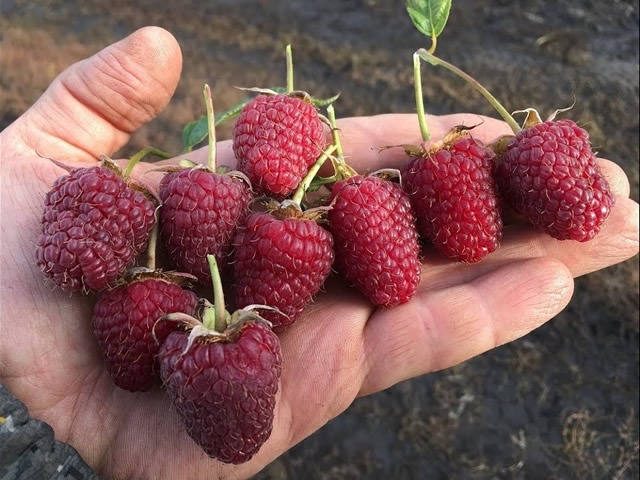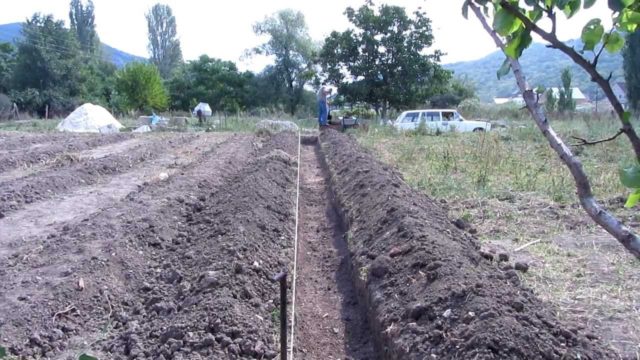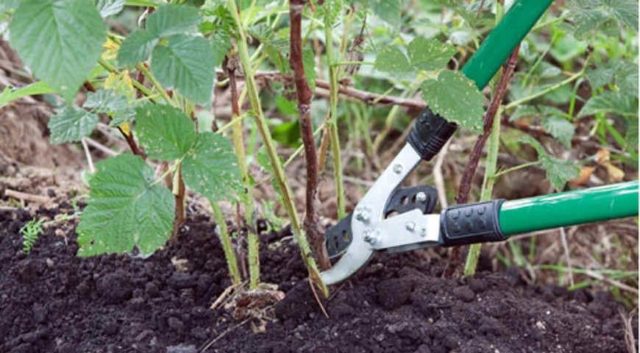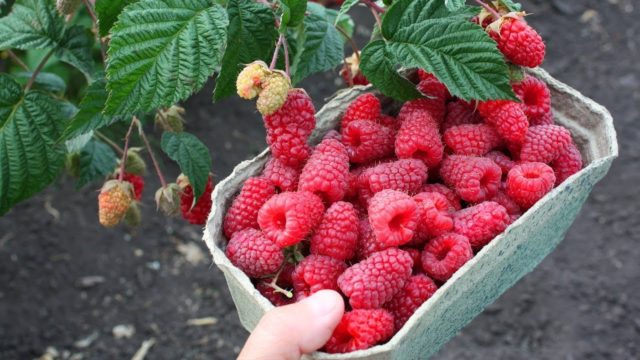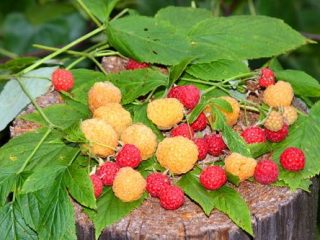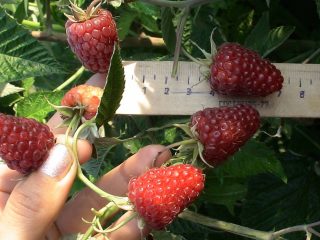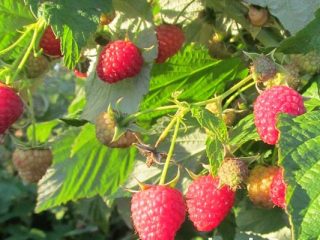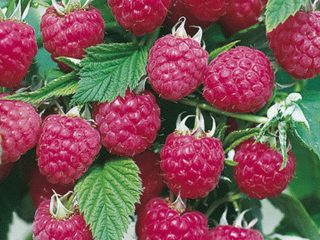Content
Reviews of the Samokhval raspberry are still a rarity, since this novelty went on sale only in the spring of 2019, and amateur gardeners have not yet had the opportunity to get to know it better. The originator of the variety promises an amazing rich taste of large-sized fruits, early maturity and increased productivity.
Description of the raspberry variety Samokhval
The Samokhval remontant raspberry variety is one of the recent achievements of Russian breeders who crossed the famous varieties Nizhegorodets and Karamelka. As a result, a variety was obtained that combines the advantages of both predecessors. In the announcements from the originator, this variety is also called Nizhegorodets-2.
Raspberry Samokhval has a compact bush formed by strong straight stems up to 2 cm thick, dispensing with support. However, under the weight of the fruit, the tops can droop significantly. Bright green young shoots, when ripe, acquire a light brown tint. At the base, the stems of Samokhval raspberries are densely covered with medium-sized thorns.
With good care, the height of the bush reaches almost 2 meters. Stems are uniformly leafy with large, deep green, serrated oval-shaped leaves with a sharp top.
Samokhval raspberry blossom amicable, abundant. Medium-sized white flowers form in clusters. The variety is characterized by good fruiting. On each stem, 20-30 berries ripen at the same time. The first harvest can be expected already in the year of planting if it was produced in autumn or early spring.
The berries are slightly pubescent, very large, elongated, wide, with a blunt tip. The descriptions indicate their density, which prolongs keeping quality and transportability. The Samokhval variety is especially valuable for its fruit size: with good care, the berries can reach a length of 50 mm and a weight of 10 g. The color of the fruit is from bright red to ruby; overripe berries may have a whitish bloom. The berries have a bright raspberry dessert taste with a slight sourness and rich aroma.
Samokhval's fruits are universal: they can be eaten fresh, processed into jams, syrups, juices and other preparations, they lend themselves well to drying and deep freezing. Fresh can be stored in the refrigerator for several days (in a shallow container).
The Samokhval variety belongs to the mid-season varieties of raspberries: in the Middle Lane, plants begin to bear fruit from the 20th of August. The variety is high-yielding: 6–8 kg of fruits are harvested from one bush.
The Samokhval raspberry bush has a powerful branched root system, which forms a large number of root stepchildren.
Pros and cons of remontant raspberry Samokhval
The undoubted advantages of the Samokhval raspberry variety include the following qualities:
- high yield rates;
- the ability to bear fruit in the next season after planting;
- excellent taste;
- transportability of the crop due to the density of the berries;
- ease of reproduction;
- frost resistance;
- adaptability to different growing conditions;
- the ability to grow without support;
- immunity to diseases and pests;
- good growth tolerance in partial shade;
- high quality berries throughout the season;
- a small number of thorns.
In the gardeners' reviews and the description of the Samokhval raspberry variety, there are also indications of the disadvantages of this variety:
- increased demands on the fertility of the substrate, the need for regular feeding;
- weak drought resistance;
- the need to shade plantings in regions with a hot arid climate;
- the presence in some cases of deformed fruits with drupes of different sizes;
- loss of a significant part of the crop in regions with short summers.
Planting and caring for raspberries Samokhval
Agrotechnics of planting and caring for raspberries Samokhval practically does not differ from the rules for planting and growing other varieties of raspberries. She needs a spacious area with fertile soil, regular watering and feeding, annual pruning. Another important technique when caring for this crop is mulching the soil under the bushes. It will significantly simplify the care of plantings: it will save root suckers from excessive growth, retain moisture in the soil, and prevent the growth of weeds.
Selection and preparation of the landing site
For planting Samokhval raspberries, they choose an area well-lit by the sun, but this variety will feel good in partial shade. Due to the peculiarities of the bush and the ability of the plant to adapt to different conditions, the shrub will grow well both in small summer cottages and in open spaces during industrial cultivation. This garden culture is demanding on the quality of the soil: it prefers well-permeable and moderately moist fertile substrates.
Particular attention should be paid to the preparation of planting holes or trenches. They are dug out in advance, a nutrient mixture of peat, wood ash, compost, humus and mineral fertilizers is placed on the bottom.
When choosing a place for planting Samokhval raspberries, it should be borne in mind that the plant actively forms root suckers and captures the territory far beyond the area allotted to it. It is better to place raspberries away from other plantings, including other varieties of raspberries.
Landing rules
You can plant Samokhval raspberries throughout the season. If you plant cuttings in early spring, then in the fall you can harvest the first crop from them.
The Samokhval raspberry planting technology is very simple: seedlings with an open root system can be soaked for several hours in a growth stimulant solution, cut off overgrown roots, put shoots in holes or trenches with a nutrient mixture and fill them with soil. After the procedure, the plantings should be well watered and mulched.
Samokhval raspberry bushes provide for a distance of 50–70 cm; when planted in several rows, at least 150 cm is left between them.
Watering and feeding
The Samokhval variety tolerates heat and drought well, but the yield directly depends on the amount of moisture received by the plant. Watering the raspberry tree should be abundant and always regular. Sprinkler irrigation or root watering can be used. It is optimal to dig shallow ditches along the raspberry rows and irrigate them.
The amount of water applied under the raspberries depends on the weather conditions. On average, each bush should have 20 liters with a frequency of watering once a week.
This variety of raspberries is extremely sensitive to soil fertility, therefore, it responds to full-fledged regular feeding with a noticeable increase in yield. Mineral complexes are applied both under the root and by spraying the raspberries.
It is recommended to feed raspberries of the Samokhval variety three times:
- In early spring, after the end of the frost, chicken manure or other organic fertilizers are applied; the use of mineral complexes is less preferable.
- At the time of the formation of flower buds, the plant's need for phosphorus and potassium increases.
- After harvesting, raspberries must be fed with organic fertilizers so that they recover before wintering.
Pruning
Pruning is the most important raspberry care activity. The originators of the Samokhval variety recommend simply cutting off or mowing all the shoots of the plant at the root in the fall.
The trimming procedure allows you to solve several problems at once:
- increase the productivity of the bush;
- to carry out the prevention of viral diseases and pest damage;
- simplify the preparation of plantings for winter.
Some gardeners, when cultivating Samokhval, use the usual pruning scheme used for summer varieties of raspberries, that is, they only remove two-year-old shoots. Thanks to this, you can get an earlier harvest, but the quality of the berries may deteriorate significantly, in addition, you will have to carefully cover the stems for the winter and pay special attention to disease prevention.
If the plant was not mowed before winter, sanitary pruning is carried out in the middle of spring.
Preparing for winter
The Samokhval variety is distinguished by frost resistance: its root system tolerates temperatures down to -35 ... -40 ° С. If the autumn mowing of the bushes is carried out, then it will not be difficult to prepare the raspberry for winter: it is enough to mulch the root system with a thick layer of mulch - up to 15 cm -.
If the bush was not cut off before winter, you can protect it from frost by providing shelter with snow.
Harvesting
Harvesting raspberries is the most time consuming process of cultivating this shrub. The Samokhval variety compares favorably with other varieties of raspberries in amicable fruiting and dense berries, collected in large bunches, which are easily separated from the bush. The main difficulty lies in the long (about 2 months) fruiting period. Ripe fruits are harvested every other day or every 2 days in small baskets. For commercial use, berries that have not reached technical ripeness are harvested and immediately placed in the refrigerator.
Reproduction
Samokhval raspberries multiply easily due to the active formation of young shoots. Root offspring are simply separated from the plant and planted in a new location.
Some gardeners prefer to propagate this crop by dividing the bush. The main condition is to divide the plant so that each seedling gets 3-5 trunks.
Diseases and pests
The plant is resistant to major pests and crop diseases.
Raspberry varieties Samokhval in rare cases can be affected by rust, powdery mildew, anthracnose. Treatment of the raspberry with Bordeaux liquid and the timely destruction of the affected plant parts helps from infection with these diseases.
The most common raspberry pests are raspberry-strawberry weevil, stem gall midge, raspberry aphid, spider mite, and raspberry beetle. Spraying the bushes with insecticides will help get rid of the invasion of these and other insects.
It is important to remember that with proper care of plantings of raspberries and other crops growing in the neighborhood, plants rarely get sick.
Conclusion
Reviews of Samokhval raspberries, although few in number, allow you to get the first impression of this interesting variety. The indisputable merits of the new crop variety undoubtedly look attractive to amateur gardeners and garden owners.
